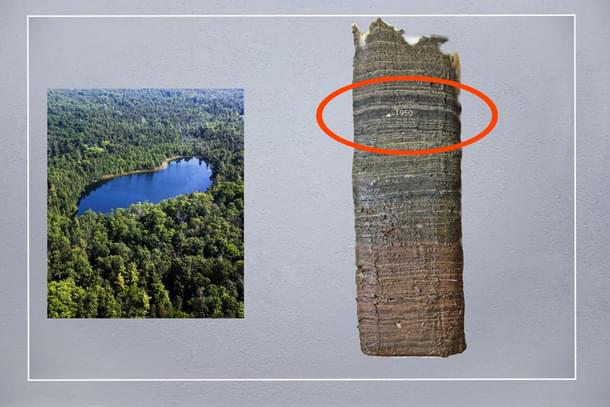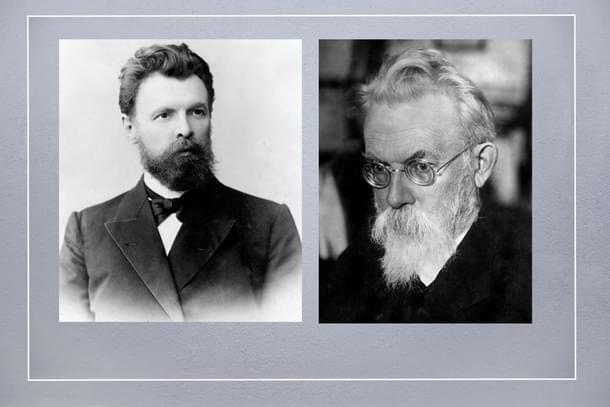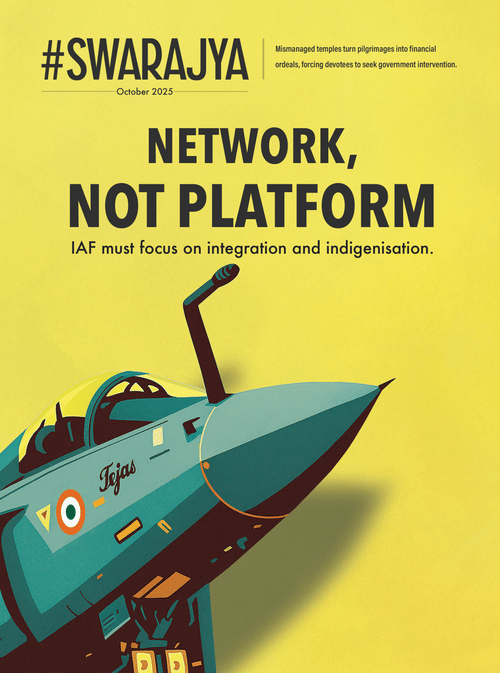Science
'Anthropocene' Was Rejected As A Geological Epoch; Good, For It's More Than That
Aravindan Neelakandan
Aug 29, 2024, 01:02 PM | Updated Oct 03, 2024, 11:34 PM IST
Save & read from anywhere!
Bookmark stories for easy access on any device or the Swarajya app.


Are we living in the Holocene — the epoch which began 11,700 before the present (BP) when the last ice age ended or the Anthropocene — the age whose geology is shaped mainly by human activity? This is a question that has many implications.
In March 2024, scientists from the International Commission on Stratigraphy (ICS) voted that the 'Anthropocene' is not a new epoch. This decision was upheld by the International Union of Geological Sciences (IUGS), the parent organisation. However, the IUGS also made the following statement:
Despite its rejection as a formal unit of the geologic timescale, the term 'Anthropocene' will continue to be used by Earth and environmental scientists, social scientists, politicians, economists, and the public. It will remain an invaluable descriptor of human-environment interactions.
This is a way of saying that the Anthropocene is indeed real but hasn't been recognised in the authoritative geoscience realm because it hasn't yet made a significant impact. The ambiguity stems from the term 'epoch,' which refers specifically to a geological epoch.
A geological epoch must have a clear and significant presence in the Earth's rock and soil layers, which, according to the IUGS, the Anthropocene does not yet demonstrate sufficiently.
Critics of the Anthropocene argue that its timeframe is too short and human impacts too variable across space and time. One should remember that this is not a battle with victories and defeats but a dialogue process. For the scientists who strongly advocate that we live in the Anthropocene, it is indeed a defined geological epoch.
However, there are controversies regarding the voting process. Both the chair and vice chair of the committee that voted, geo-scientists Jan A Zalasiewicz, and Martin J Head, wanted the annulling of the votes because the voting process did not take the complete body of evidence.
One important such evidence is mud from Crawford Lake in Canada. Scientists have studied the sediments of this lake which provides a geological archive. The sediments have annual layers which can be studied by scientists to reveal what event impacted a particular layer.

The lines have predictably revealed the impact of fossil fuels, microplastics, and nuclear weapon tests. The particles coming from 1950 onward show this change. So, a group of scientists proposed 1950 as the line of the beginning of the Anthropocene.
Perhaps the Anthropocene demands a new kind of science.

Though the term Anthropocene came into circulation recently, the word’s origin is almost a century old. Russian geologists Aleksei Pavlov and Vladimir Vernadsky were the ones who studied and brought out the fact to the scientific community that humans were increasingly impacting the geochemical cycles of the planet.
Vladimir Ivanovich Vernadsky (1863-1945) needs a special mention here. He was one of the earliest scientists (and his work and views are still relevant today), who recognised the place of humanity on the planet as ‘a mighty geological force.’ In a paper published in American Scientist in 1945, Vernadsky wrote:
Mankind taken as a whole is becoming a mighty geological force. There arises the problem of reconstruction of biosphere in the interest of free thinking humanity as a single totality. This new state of the biosphere, which we approach without noticing it, is the noosphere.
Vernadsky in this paper perhaps showed for the first time the importance and insignificance of humanity. In terms of the matter it forms as a single totality, the human species is insignificant concerning the matter of the entire planet. But its inner potential is what makes it an important geological force.
This paper was published in January of 1945. July of that year would see the testing of the atom bomb at the Trinity site and then August would see the dropping of atom bombs on human beings, unleashing before the world its destructive potential.
Since then, we have progressively marred our planet by aggressively channelling invaluable resources — both material and human — into the machinery of war. These destructive tools serve the territorial instincts of our primitive evolutionary past, cloaked in the language of religion, ideology, holy texts, and sacred lands.
When we witness rockets launched by terrorists, fuelled by an inability to coexist peacefully with those of different beliefs or ideologies, we witness the tragic waste of our precious, dwindling resources. The cycle of violence perpetuates itself, leaving behind not only shattered buildings and lost childhoods but also indelible geological records etched into the earth’s strata.
Rajaji was more than right when he wrote in Swarajya on 30 May 1959 that the nuclear arms race had overshadowed the real issue of 'the health of the world.' While many viewed his disarmament stance as a quixotic Gandhian quirk, within the Anthropocene framework, Rajaji is more scientific than all the tech scientists working in all the military-industry complex combined.

Anthropocene is thus a grim scientific indicator of both our importance and insignificance. Even as geologists discuss how Anthropocene can be identified in the columns of lake sediments, it provides a strong framework to identify ourselves in the biological web of life and geological column of deep time.
We as a species need to phase out arms race and arms production. Except as a means to thwart incoming near-earth objects, missiles should not become the geological markers of our generation and our species for the later generations or later forms of intelligent lives that might evolve on this planet.
Such a vision and value system can come from the framework of the Anthropocene. So, the Anthropocene is more real than being a geological epoch. It is a multi-dimensional reality and a species' responsibility.
Anthropocene is a statement that collective humanity is the way towards the species' future. And that needs more scientific research – from ecology and evolution to educational psychology and peace economics.
Online References:





